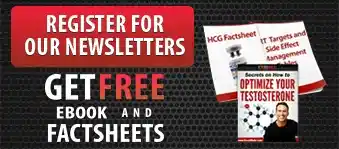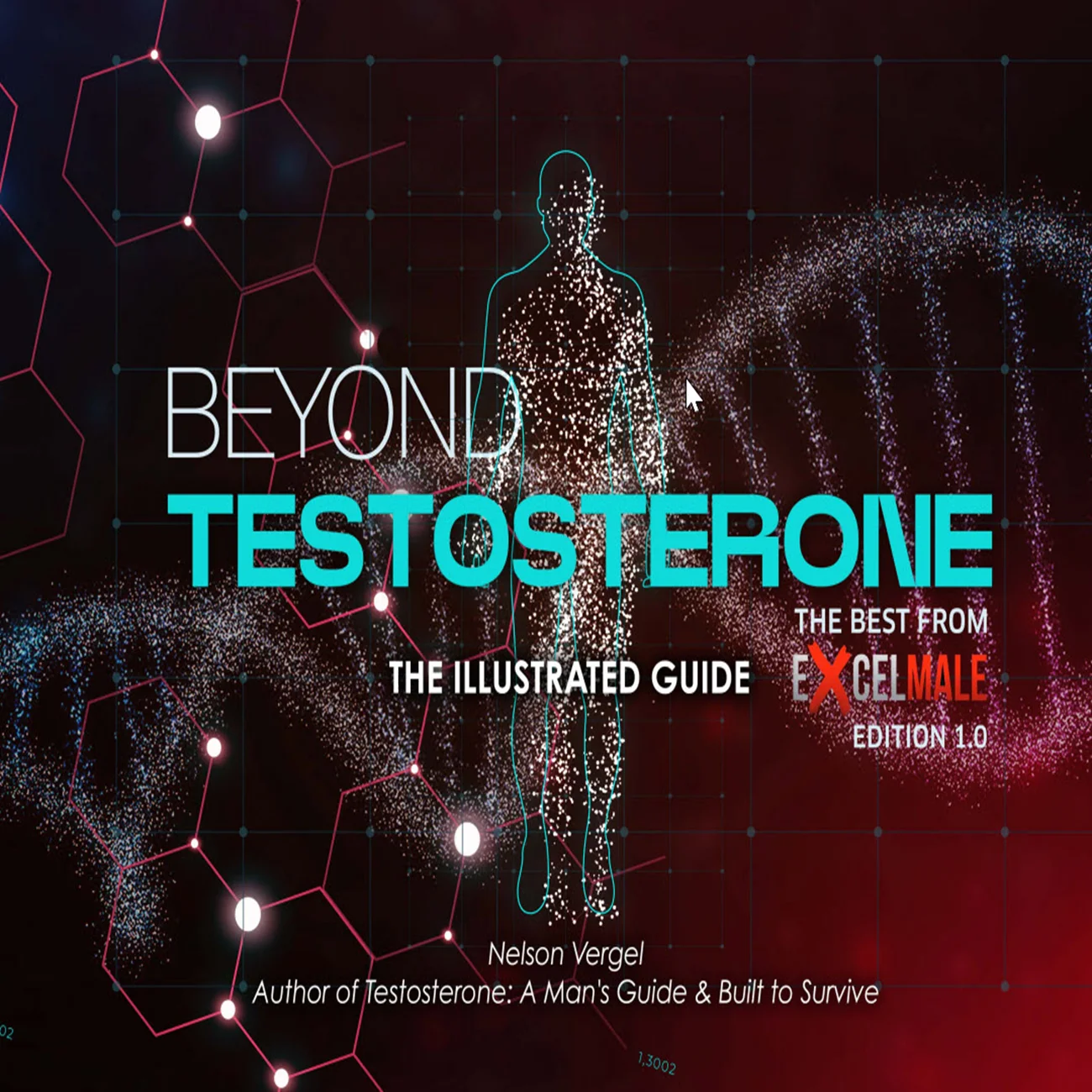Practical Clinical Summary on Testosterone Therapy in Women (From ExcelMale.com)
Based on the ExcelMale forum threads and related clinical literature, here's a comprehensive extraction of practical content for a clinical article:
Physiological Role & Rationale
Key Functions:
- Testosterone serves dual roles: precursor for estrogen biosynthesis AND direct physiological effects via androgen receptors
- Critical for sexual function, bone health, mood, behavior, cognition, muscle strength, energy, and metabolic function
- Women produce approximately 1/12th the testosterone of men (average 4-7 mg/day in men vs. ~500 mcg/day in women)
- Over 80% of bioavailable testosterone in women comes from local intracrine production from adrenal precursors (androstenedione and DHEA)
Vaginal Health:
- Testosterone promotes pelvic blood flow, vascular smooth muscle relaxation, mucin secretion, and lubrication
- Modulates pain, inflammation, nerve fiber density, and neurotransmission in vaginal tissue
- Essential for maintaining vaginal tissue structure including smooth muscle thickness and collagen fiber compactness
Clinical Indications
Evidence-Based:
- Hypoactive Sexual Desire Disorder (HSDD) in postmenopausal women (only FDA-recognized indication per Global Consensus Position Statement)
- Benefits include: improved sexual desire, arousal, orgasm, pleasure, and reduced sexual distress
Additional Applications (based on clinical experience):
- Menopausal symptom relief (energy, mood, vasomotor symptoms)
- Body composition improvement (increased lean mass, reduced fat)
- Bone mineral density maintenance
- Reduction of stress urinary incontinence
- May resolve menopausal symptoms even in women on aromatase inhibitors
Dosing Protocols
Injectable Testosterone Cypionate (Subcutaneous):
- Starting dose: 2.5-5 mg twice weekly (total 5-10 mg/week)
- Normal production equivalent: ~500 mcg/day = 3.5 mg/week
- Practical range: 2.4-20 mg/week, though most women need 10-15 mg/week
- Evidence suggests mild supraphysiological levels (80-100 ng/dL) often needed for symptom resolution
- Adjust based on clinical response and side effects, not rigid blood level targets
- Use 27-gauge ½" insulin syringe for subcutaneous administration
- Steady state achieved in 6 weeks
Topical Testosterone:
- Compounded creams: 0.5-2 mg per day (typical dosing)
- Commercial men's products too strong; require compounding pharmacy
- Intravaginal application shows best absorption for creams
- Women's International Pharmacy (womensinternational.com) provides protocols and research packets
Testosterone Pellets:
- Doses: 50-225 mg (common US doses: 75, 100, 112.5, 125, 150 mg)
- Duration: 10-12 weeks
- Considerations: Cannot adjust if side effects develop; expensive; variable metabolism
- May provide more consistent levels but less flexible than injections
Monitoring:
- Initial assessment at 6 weeks post-initiation
- Measure total and free testosterone using LC-MS/MS (most accurate for low female ranges)
- Monitor Free Androgen Index (FAI) - aim to keep <5% per British Menopause Society
- Clinical response more important than specific target levels
- Check for androgen excess signs every 6 months
Target Levels & Individualization
Blood Level Considerations:
- "Normal" female range not well-established and often insufficient for symptom resolution
- Clinical experience shows women tolerate total T levels 120-400 ng/dL
- Some women require levels above normal range for therapeutic benefit
- Individual variability is enormous: same 100 mg pellet dose produced 83-368 ng/dL range (4.4-fold difference)
- Dose based on response and side effects, not just serum levels
- Free testosterone levels more clinically relevant than total testosterone
Safety Profile
Cardiovascular:
- Testosterone inversely associated with CVD risk in women
- Large database analysis showed DECREASED risk of major adverse cardiac events with testosterone therapy
- No increased risk of venous thromboembolism or pulmonary embolism
- Non-methylated testosterone has minimal effects on lipid profile (possible slight HDL decrease, not clinically significant)
Breast Cancer:
- 9-year retrospective study showed 35.5% REDUCTION in invasive breast cancer (144 vs. 223 per 100,000 person-years)
- Testosterone-androgen receptor complex is antiproliferative in breast tissue
- Testosterone downregulates estrogen receptor alpha and increases apoptosis in breast cancer cell lines
- May be protective, especially with subcutaneous testosterone pellet therapy
- Historically used as breast cancer treatment before pharmaceutical alternatives
- Safe in breast cancer survivors per multiple studies
Metabolic:
- No adverse effects on liver function (non-methylated forms)
- No changes in renal function or blood cell indices with transdermal testosterone
- May improve insulin sensitivity
- FTM transgender literature shows decades of high-dose use without increased morbidity/mortality
Other Safety Considerations:
- Does not stimulate endometrium
- No association with endometrial or other malignancies in published studies
- Blood pressure and metabolic parameters remain stable
Side Effects & Management
Common Androgenic Side Effects:
- Acne - tends to resolve with continued treatment (observed in FTM literature); 2.5 mg finasteride helpful (postmenopausal women only)
- Facial/body hair growth - most common complaint; typically mild; manageable with shaving/laser; tolerance highly individual
- Scalp hair thinning - genetics-dependent; some experience at low doses, others not at high doses; most concerning side effect
- Clitoral enlargement - within reason, often leads to improved sexual response ("nuclear orgasms")
- Voice deepening - rare at physiological doses; may be beneficial in male-dominated professions
- Fine body hair at injection site - minimal, barely noticeable
Dose-Dependent:
- Virilization uncommon and reversible if caught early
- Voice changes and clitoral enlargement may become irreversible with prolonged exposure
- Using lowest effective dose minimizes androgenic effects
Vaginal Atrophy (Paradoxical Effect):
- High-dose or supraphysiological testosterone can cause vaginal atrophy
- Mechanism: testosterone suppresses estrogen, leading to tissue thinning, dryness
- Symptoms: dryness, irritation, bleeding, dyspareunia, increased UTI/BV risk
- More common in transgender men on masculinizing doses
- Treatment: local vaginal estrogen (cream, tablet, or ring) - does NOT interfere with systemic testosterone therapy
- Prevention: adequate lubrication during sexual activity; regular pelvic blood flow stimulation
Patient Selection:
- Avoid in women fearful of any cosmetic androgenic changes
- Set realistic expectations
- Behavioral changes not typically observed (pre-existing personality traits may intensify)
Formulation Considerations
Advantages by Route:
- Subcutaneous injections: Inexpensive, effective, easy dose adjustment, steady-state in 6 weeks, no transference risk
- Creams: Convenient, no needles, adjustable dosing
- Pellets: Consistent levels, infrequent administration
Disadvantages:
- Injections: Requires self-injection (though with insulin needles, relatively painless)
- Creams: Variable absorption, transference risk to children/partners
- Pellets: Cannot reverse if sides develop, expensive, variable release, requires incision
Avoid:
- Oral 17-alpha-alkylated testosterone (hepatotoxicity risk)
- Products designed for men (dosing too high)
Barriers to Implementation
Systemic Issues:
- No FDA-approved testosterone products for women in US (Australia has Androphile for HSDD)
- Not taught in medical schools
- Residual fear from Women's Health Initiative study
- Endocrine Society guidelines conservative/restrictive
- Lack of physician awareness and training
- Women must use off-label men's products or compounded formulations
Clinical Practice Challenges:
- Pharmacists may question prescriptions for females
- Insurance often won't cover
- Need for specialized compounding pharmacies
- Testing challenges (standard assays not sensitive enough for female ranges; need LC-MS/MS)
Best Practices & Recommendations
Initiation:
- Comprehensive clinical assessment
- Rule out other causes of sexual dysfunction
- Baseline testosterone and FAI measurement
- Patient education on realistic expectations and side effects
- Shared decision-making regarding route and dosing
Monitoring Protocol:
- Week 6: Check testosterone levels, assess symptoms, evaluate for androgen excess
- Every 6 months: Testosterone levels, clinical response assessment, side effect check
- Annual: Comprehensive metabolic panel, lipids, hematocrit
Combination Therapy:
- Often combined with estradiol in postmenopausal women
- Testosterone alone may resolve menopausal symptoms without estrogen in some women
- May require estrogen addition for optimal libido response (some women need both)
Special Populations:
- Premenopausal women: Limited data; careful consideration needed
- Breast cancer survivors: Appears safe; may be protective
- Women on aromatase inhibitors: May relieve symptoms without estrogen
Future Directions
Needed:
- Medical school curriculum inclusion
- Professional society endorsement
- FDA-approved formulations for women
- Long-term safety studies
- Standardized diagnostic criteria for testosterone insufficiency
- Better laboratory reference ranges for women
Research Gaps:
- Optimal dosing strategies
- Long-term cardiovascular outcomes
- Breast cancer relationship clarification
- Cognitive and bone health effects
- Premenopausal indications
Key Takeaways for Clinicians
- Testosterone therapy in women has 80+ years of evidence supporting efficacy and safety
- Mild supraphysiological levels often needed for symptom resolution
- Individual response highly variable - treat the patient, not the lab value
- Subcutaneous injections offer best balance of efficacy, safety, and cost
- Androgenic side effects manageable and often well-tolerated
- Cardiovascular and breast cancer data reassuring
- Compounding pharmacies essential resource in absence of FDA-approved products
- Patient selection and education critical to success
This comprehensive summary synthesizes the practical clinical information from the ExcelMale forum discussions and related medical literature, providing actionable guidance for clinicians considering testosterone therapy in women.
Scientific References
Physiological Role and Mechanisms
- Traish AM, Morgentaler A. Androgen Therapy in Women with Testosterone Insufficiency: Looking Back and Looking Ahead. Sexual Medicine Reviews. 2022.
- Supports: Testosterone's role in sexual function, bone health, mood, behavior, and cognition in women
- Maseroli E, Vignozzi L. Testosterone and Vaginal Function. Sexual Medicine. 2020;8:379-392.
- Supports: Testosterone's effects on vaginal structure, function, arousal, and lubrication mechanisms
- Cellai I, Di Stasi V, Comeglio P, et al. Insight on the intracrinology of menopause: androgen production within the human vagina. Multiple publications.
- Supports: Local intracrine testosterone production in vaginal tissue
- Glaser RL, Dimitrakakis C. Testosterone and breast cancer prevention. Maturitas. 2015;82(3):291-295.
- Supports: >80% of bioavailable testosterone from adrenal precursor conversion
Clinical Efficacy
- Global Consensus Position Statement on the Use of Testosterone Therapy for Women. Multiple international medical societies. 2019-2021.
- Supports: Evidence-based recommendation for HSDD treatment; sexual desire, arousal, orgasm improvements
- Davis SR, Davison SL, Donath S, Bell RJ. Circulating androgen levels and self-reported sexual function in women. JAMA. 2005;294(1):91-96.
- Supports: Relationship between testosterone levels and sexual function
- Simon JA, Goldstein I, Kim NN, et al. The role of androgens in the treatment of genitourinary syndrome of menopause (GSM): ISSWSH expert consensus panel review. Menopause. 2018;25:837-847.
- Supports: Testosterone for vulvovaginal atrophy and GSM symptoms
Dosing and Pharmacokinetics
- Burger HG, Hailes J, Nelson J, Menelaus M. Effect of combined implants of estradiol and testosterone on libido in postmenopausal women. British Medical Journal. 1987;294:936-937.
- Supports: Testosterone implant dosing and serum level responses (192±91 ng/dL)
- Glaser R, Dimitrakakis C. Testosterone implants in women: Pharmacological dosing for a physiologic effect. Maturitas. 2013;74:179-184.
- Supports: Rationale for supraphysiological serum levels; safety of elevated levels in women
- Fooladi E, Reuter SE, Bell RJ, Robinson PJ, Davis SR. Pharmacokinetics of a transdermal testosterone cream in healthy postmenopausal women. Menopause. 2015;22(1):44-49.
- Supports: Transdermal testosterone dosing and absorption variability
- Apperloo M, Midden M, van der Stege J, et al. Vaginal application of testosterone: a study on pharmacokinetics and the sexual response in healthy volunteers. Journal of Sexual Medicine. 2006;3:541-549.
- Supports: Intravaginal testosterone administration protocols
Cardiovascular Safety
- Davis SR. Cardiovascular and cancer safety of testosterone in women. Current Opinion in Endocrinology, Diabetes and Obesity. 2011;18:198-203.
- Supports: Inverse association between testosterone and CVD risk in women
- Agrawal P, Singh SM, Hsueh J, et al. Testosterone therapy in females is not associated with increased cardiovascular or breast cancer risk: a claims database analysis. Journal of Sexual Medicine. 2024;21(5):414-419.
- Supports: Decreased risk of MACE, no increased cardiovascular events with testosterone therapy
- Bell RJ, Davison SL, Papalia MA, McKenzie DP, Davis SR. Endogenous androgen levels and cardiovascular risk profile in women across the adult life span. Menopause. 2007;14(4):630-638.
- Supports: Testosterone's cardiovascular protective effects
- Irwig MS. Cardiovascular health in transgender people. Reviews in Endocrine and Metabolic Disorders. 2018;19:243-251.
- Supports: Safety data from high-dose testosterone in transgender men (no increased CVD risk)
Breast Cancer Safety
- Glaser RL, York AE, Dimitrakakis C. Breast Cancer Incidence Reduction in Women Treated with Subcutaneous Testosterone: Testosterone Therapy and Breast Cancer Incidence Study. European Journal of Breast Health. 2021;17(2):150-156.
- Supports: 35.5% reduction in breast cancer incidence (144 vs 223 per 100,000 person-years); 9-year retrospective study
- Hickey TE, Robinson JL, Carroll JS, Tilley WD. Minireview: The androgen receptor in breast tissues: growth inhibitor, tumor suppressor, oncogene? Molecular Endocrinology. 2012;26(8):1252-1267.
- Supports: Antiproliferative effects of testosterone-AR complex in breast tissue
- Dimitrakakis C, Jones RA, Liu A, Bondy CA. Breast cancer incidence in postmenopausal women using testosterone in addition to usual hormone therapy. Menopause. 2004;11(5):531-535.
- Supports: Testosterone's breast protective effects
- Glaser RL, Dimitrakakis C, Trimble N, Martin V. Testosterone pellet implants and breast cancer: A case control study. Maturitas. 2019;129:42-46.
- Supports: Long-term safety data; no increased breast cancer risk with pellet therapy
Metabolic and Other Safety Parameters
- Shufelt CL, Braunstein GD. Safety of testosterone use in women. Maturitas. 2009;63(1):63-66.
- Supports: Overall safety profile of testosterone therapy in women
- Traish AM, Gooren LJ. Safety of physiological testosterone therapy in women: Lessons from female-to-male transsexuals (FMT) treated with pharmacological testosterone therapy. Journal of Sexual Medicine. 2010;7:3758-3764.
- Supports: Decades of high-dose safety data from transgender men; no increased morbidity/mortality
- Shadid S, Abosi-Appeadu K, De Maertelaere AS, et al. Effects of gender-affirming hormone therapy on insulin sensitivity and incretin responses in transgender people. Diabetes Care. 2020;43:411-417.
- Supports: Testosterone improves insulin sensitivity in women
Side Effects and Management
- Kingsberg SA, Simon JA, Goldstein I. The current outlook for testosterone in the management of hypoactive sexual desire disorder in postmenopausal women. Journal of Sexual Medicine. 2008;5(Suppl 4):182-193.
- Supports: Side effect profiles and management strategies
- Brincat M, Magos A, Studd JW, et al. Subcutaneous hormone implants for the control of climacteric symptoms. Lancet. 1984;1(8367):16-18.
- Supports: Minimal side effects at therapeutic doses; slight increase in facial hair in minority of patients
- Glaser R, Dimitrakakis C. Reduced breast cancer incidence in women treated with subcutaneous testosterone, or testosterone with anastrozole: a prospective, observational study. Maturitas. 2013;76(4):342-349.
- Supports: Testosterone safety even in combination with aromatase inhibitors
Vaginal Atrophy (Testosterone-Related)
- Baldassarre M, Giannone FA, Foschini MP, et al. Effects of long-term high dose testosterone administration on vaginal epithelium structure and estrogen receptor-α and -β expression of young women. International Journal of Impotence Research. 2013;25(5):172-177.
- Supports: Vaginal atrophy with supraphysiological testosterone doses; tissue changes
- Light A, Obedin-Maliver J, Sevelius JM, Kerns JL. Transgender men who experienced pregnancy after female-to-male gender transitioning. Obstetrics & Gynecology. 2014;124(6):1120-1127.
- Supports: Prevalence of vaginal atrophy in transgender men on testosterone
- Fernandes T, Pedro AO, Baccaro LF. Hormonal, metabolic, and endometrial safety of testosterone vaginal cream versus estrogens for the treatment of vulvovaginal atrophy in postmenopausal women. Multiple journals.
- Supports: Local vaginal estrogen treatment for testosterone-associated atrophy
Compounding and Formulations
- Olson BR, et al. Compounded Testosterone Preparations Raise Testosterone Levels to Premenopausal Ranges in Postmenopausal Women With Hypo-Sexual Desire Disorder (HSDD). Endocrine Society Meeting AbstractMON-LB002. 2019.
- Supports: Efficacy of compounded testosterone formulations
- Women's International Pharmacy.Testosterone therapy protocols for women. Available at: womensinternational.com
- Supports: Clinical protocols and compounding pharmacy resources
Monitoring and Laboratory Testing
- Rosner W, Auchus RJ, Azziz R, Sluss PM, Raff H. Position statement: Utility, limitations, and pitfalls in measuring testosterone: an Endocrine Society position statement. Journal of Clinical Endocrinology & Metabolism. 2007;92(2):405-413.
- Supports: Need for LC-MS/MS testing for accurate female testosterone measurement
- British Menopause Society (BMS).Guidance on testosterone therapy for women. 2016.
- Supports: FAI monitoring recommendations; target <5% during treatment
Barriers to Treatment
- Kingsberg SA, Rezaee RL. Hypoactive sexual desire in women. Menopause. 2013;20(12):1284-1300.
- Supports: Lack of FDA-approved products; off-label prescribing patterns
- Survey data on testosterone prescribing. Approximately 4 million prescriptions for estrogen/androgen combinations or testosterone written off-label for women. US Pharmacist. 2014.
- Supports: Scale of off-label prescribing due to lack of approved products
Australian Regulatory Approval
- Therapeutic Goods Administration (TGA), Australia.Approval of Androphile (testosterone) for hypoactive sexual desire disorder in women. April 2021.
- Supports: Only country with approved testosterone product specifically for women
Historical Context
- Multiple publications from 1940s-1980s.Historical use of testosterone in women for various indications.
- Supports: 80+ years of clinical experience with testosterone therapy in women
- Vergel N. Testosterone: A Man's Guide. 2nd Edition. Milestones Publishing. 2011.
- Supports: Practical dosing information; women produce 1/12th testosterone of men
Professional Guidelines and Position Statements
- Davis SR, Baber R, Panay N, et al. Global Consensus Position Statement on the Use of Testosterone Therapy for Women. Journal of Clinical Endocrinology & Metabolism. 2019;104(10):4660-4666.
- Supports: International consensus on indications, benefits, and monitoring
- Faubion SS, Kingsberg SA, Mack WJ, et al. The North American Menopause Society (NAMS) position statement on hormone therapy. Menopause. 2022;29(7):767-794.
- Supports: Current professional society perspectives on hormone therapy
Additional Supporting Literature
- Braunstein GD. Androgen insufficiency in women: summary of critical issues. Fertility and Sterility. 2002;77(Suppl 4):S94-S99.
- Supports: Clinical syndrome of androgen insufficiency in women
- Somboonporn W, Davis S, Seif MW, Bell R. Testosterone for peri- and postmenopausal women. Cochrane Database of Systematic Reviews. 2005;(4):CD004509.
- Supports: Systematic review of testosterone therapy benefits
- Wierman ME, Arlt W, Basson R, et al. Androgen therapy in women: a reappraisal: an Endocrine Society clinical practice guideline. Journal of Clinical Endocrinology & Metabolism. 2014;99(10):3489-3510.
- Supports: Endocrine Society clinical practice guidelines (though conservative)
Note on References
These references represent the primary scientific support for the clinical content summarized above. Many are cited directly in the ExcelMale forum discussions or were identified through the web searches conducted. The references span from historical papers (1940s-1980s) establishing testosterone's role in women's health through contemporary research (2020-2024) on cardiovascular and breast cancer safety.
Key researchers in this field include:
- Rebecca Glaser, MD - Extensive work on testosterone pellet therapy and breast cancer prevention
- Susan Davis, MD - Global authority on testosterone therapy in women; led Global Consensus Position Statement
- Abraham Morgentaler, MD - Pioneer in testosterone therapy research
- Abdulmaged Traish, PhD - Androgen physiology and women's health
- Constantine Dimitrakakis, MD - Testosterone and breast cancer research
For a complete clinical article, additional references on specific topics (bone density, cognitive function, mood effects) may be needed based on the article's final scope and target journal requirements.












